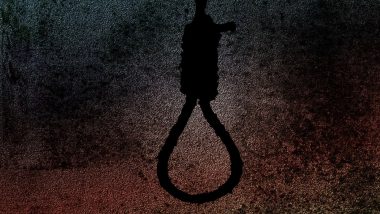The Burari suicide case is perhaps one of the most bizarre ones India has ever seen. Eleven members of the deeply religious Bhatia family from Delhi were found dead, where 10 were found hanging and one was found strangulated. The investigators immediately suspected an occult angle since a strange handwritten note describing how the macabre act should be carried out was found at the site. As more details from the incident emerge, the mystery deepens, making us wonder what could make 11 members of a family take such a drastic step?
But Mumbai-based psychiatrist Dr. Sanghanayak Meshram doesn’t share our disbelief. The medical literature is rife with instances of mass suicides and suicide pacts. “In the Bhatia family case, it’s clearly a case of Folie a Famille (madness of a family) where members of a close-knit family share delusions,” says Dr. Meshram. “It’s a variant of Folie a Duex (madness of two), where the psychosis is shared by two people,” he adds.
What is Folie a Famille?
To understand folie a famille, it’s important that we understand what shared psychosis is or folie a deux is. According to PsychCentral, shared psychosis “is a delusion that develops in an individual who is involved in a close relationship with another person (sometimes termed the ‘inducer’ or ‘the primary case’) who already has a psychotic disorder with prominent delusions.”
The delusions can sometimes seem plausible and sometimes bizarre. People with shared psychosis may believe that someone is spying on their family or their movements are being tracked, which is believable. In other cases, delusions can be quite bizarre, like being a victim of an intergovernmental conspiracy etc.
The Bhatia family showed clear symptoms of shared psychosis since victims of folie de famillie are usually people who are related by blood or marriage. Even those who have lived together for a long time experience shared psychosis.
In folie a famille, more than two individuals share the same delusions enforced by the inducer. The involved people may have a close relationship, isolated from the rest of the society. For example, a nuclear family comprising a husband, wife and children can share the psychosis of the primary person who may be suffering from paranoid schizophrenia.
According to researchers Igor Salganik and Peter Soifer, such groups are close units with sharply defined borders. Although entry to such groups is usually based on blood relations or family bonds, sometimes non-related members living in close proximity or flatmates can also have shared psychosis.
The most notable one is that of Charles Manson Family, where a group of delusional commune dwellers in Los Angeles USA, committed mass murders at the behest of their charismatic leader in 1969.
Social Isolation As a Factor
The rare disorder is seen in family members who are socially isolated. The social isolation reinforces their skewed beliefs and delusions. In the absence of contact with the external world, the members of the group or family become so influenced by their own delusions, that they start becoming identical in thoughts and actions.
The Bhatia family incident made a good case for it. A neighbour of the Bhatias who spoke to PTI revealed that they mostly kept to themselves. Despite their cordial behaviour, Bhatias never shared their private matters with their neighbours.
Researchers Salganik and Soifer say that in the beginning, some delusional families may not be reclusive. They may, in fact, try to gain acceptance from the society at large. When they see their views are not taken seriously, they may give up and become hostile to the society.
The group doesn’t allow external information to enter into the group, lest it dilutes their delusions. Even if it is allowed, it is interpreted in a way that agrees with their own values.
The Role of The Dominant Charismatic Leader
The primary case or the inducer who leads the family is the dominant person in the relationship. He or she may be suffering from psychosis, on account of schizophrenia, mood disorders with psychotic features or due to drug abuse. They may pass on their delusions to the passive members of the family who may be mentally healthy, at least initially.
Dr. Meshram adds, “If the most dominant person of the family experiences delusions, the other more passive members of the family believes him due to the influence he wields on them. In most cases, the inducer is the patriarch of the family.”
According to PTI reports, the youngest son Lalit Bhatia (45) saw visions of his dead father in his dreams who would give him elaborate instructions. Police suspect that Lalit was the inducer in this case because he took down elaborate notes on how to carry out the suicides, including the positioning of the bodies, based on the visions he received in his dreams.
The Religious Angle
Dr. Meshram says that the role of religion plays a big role in strengthening the delusions of the family. The Bhatia family was also very religious, praying as many as three times a day and visiting temples. The sudden surge in faith was brought about ten years ago when Lalit recovered miraculously from an accident, which left him mute. The family tried all means to cure him with no success. In the end, they turned to prayers and that’s when he was “cured.” This reinforced the family’s faith in prayers and religion and it made them more spiritual.
The motive behind the suicide was also spiritual since the handwritten notes found in the house contained elaborate instructions to carry out the deed. A register with notes about moksha may explain why the family entered a suicide pact.
The Bhatia family case is just one among many cases of shared psychosis. There have been many such instances of folie de deux and folie a famille in the past, although many may not have ended in the macabre way it did. The members who are under the spell of the charismatic leader can break free from it if they are isolated from the inducer. But the delusions can persist in 60 percent of the cases even if they are separated. That’s why researchers recommend joint therapy where both the individual and the family can undergo treatment.
(References: Folie a famille; Folie a Deux – a Social-Psychological Approach)
(The above story first appeared on LatestLY on Jul 04, 2018 01:31 PM IST. For more news and updates on politics, world, sports, entertainment and lifestyle, log on to our website latestly.com).













 Quickly
Quickly




















